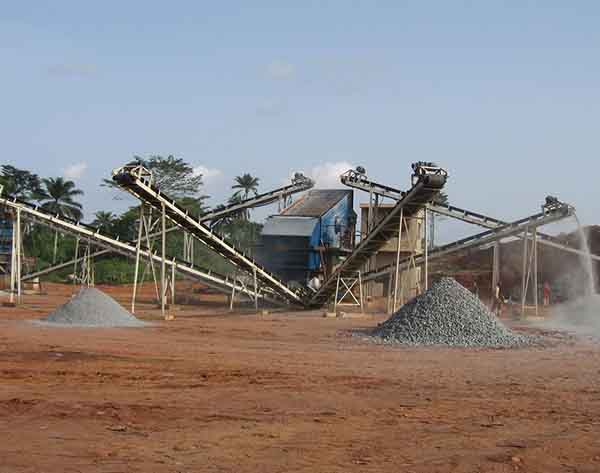Maintenance Measures for Belt Conveyor Wear
The following mainly lists several main forms of wear and puts forward some maintenance measures based on actual production.
1. Wear between the feed chute and the conveyor belt
The feed chute is in close contact with the conveyor belt, and its design and installation have a great influence on the wear of the conveyor belt.
Maintenance measures
A. The height of the material falling on the conveyor belt should be less than 1m, so that the impact force on the conveyor belt is as small as possible.
B. A bar screen should be installed in the feeding chute to make the fine-grained materials fall on the conveyor belt first and provide bedding for the bulk materials.
C. Reasonably designed chute and guide trough, so that the material continuously falls to the center of the conveyor belt.
D. The baffle width of the guide trough should become narrower and narrower along the running direction of the conveyor belt.
E. The feeding section is kept level, or the slope is not more than 8°. And in the feeding section, buffer rollers are installed or trough rollers are arranged densely.
2. Wear between the reversing roller and the conveyor belt
The reversing roller is located at the end of the conveyor, and the conveyor belt rotates with the reversing roller, turning the lower conveyor belt into an upper conveyor belt to carry materials.
Maintenance measures
A. Install a scraper near the reversing roller. The scraper and the receiving plate are integrally welded together, and the receiving plate is connected to the conveyor frame by bolts. And make the scraper and the drum have a certain inclination angle to increase the scraping capacity.
B. Install a V-type cleaner at the front of the reversing drum. The rubber strap is installed at the contact end of the cleaner and the conveyor belt to reduce the abrasion of the belt.
C. Before reversing the drum, install a baffle on the unsupported section to reduce material leakage.
3. Local wear caused by conveyor belt deviation
Conveyor belt deviation is a common fault of conveyors, which mainly refers to the deviation of the centerline of the conveyor belt from the longitudinal centerline of the conveyor when the conveyor is running.
Maintenance measures
A. If the centerline of the entire conveyor is offset, the centerline must be re-calibrated; if it is only slightly off, the bearing seat on the right side can be tightened.
B. Because the conveyor belt itself is bent or the joints are not correct, the conveyor belt is not evenly stressed, causing deviation, and the conveyor belt should be cut straight and re-glued or nailed.
C. The axis of the roller group is not perpendicular to the centerline of the conveyor belt, causing the conveyor belt to run backward. The adjustment method is to deviate from which side, the idler on which side is skewed 2°~4° in the forward direction of the conveyor belt. Generally, it is necessary to adjust several rollers to correct the deviation.
4. Wear between the roller and the conveyor belt
The causes of wear between the roller and the conveyor belt mainly include installation errors, structural deformation of the roller frame, and roller corrosion.
Maintenance measures
A. Ensure that the entire conveyor is on a centerline. Ensure that the inclined rollers on both sides have the same inclination angle as the horizontal roller in the middle. All intermediate rollers are on the same horizontal surface to ensure uniform force on each roller.
B. Minimize the use of self-aligning rollers.
C. Strengthen the daily maintenance of rollers. The damaged roller should be replaced in time.
Related Products
There are no relevant articles.



